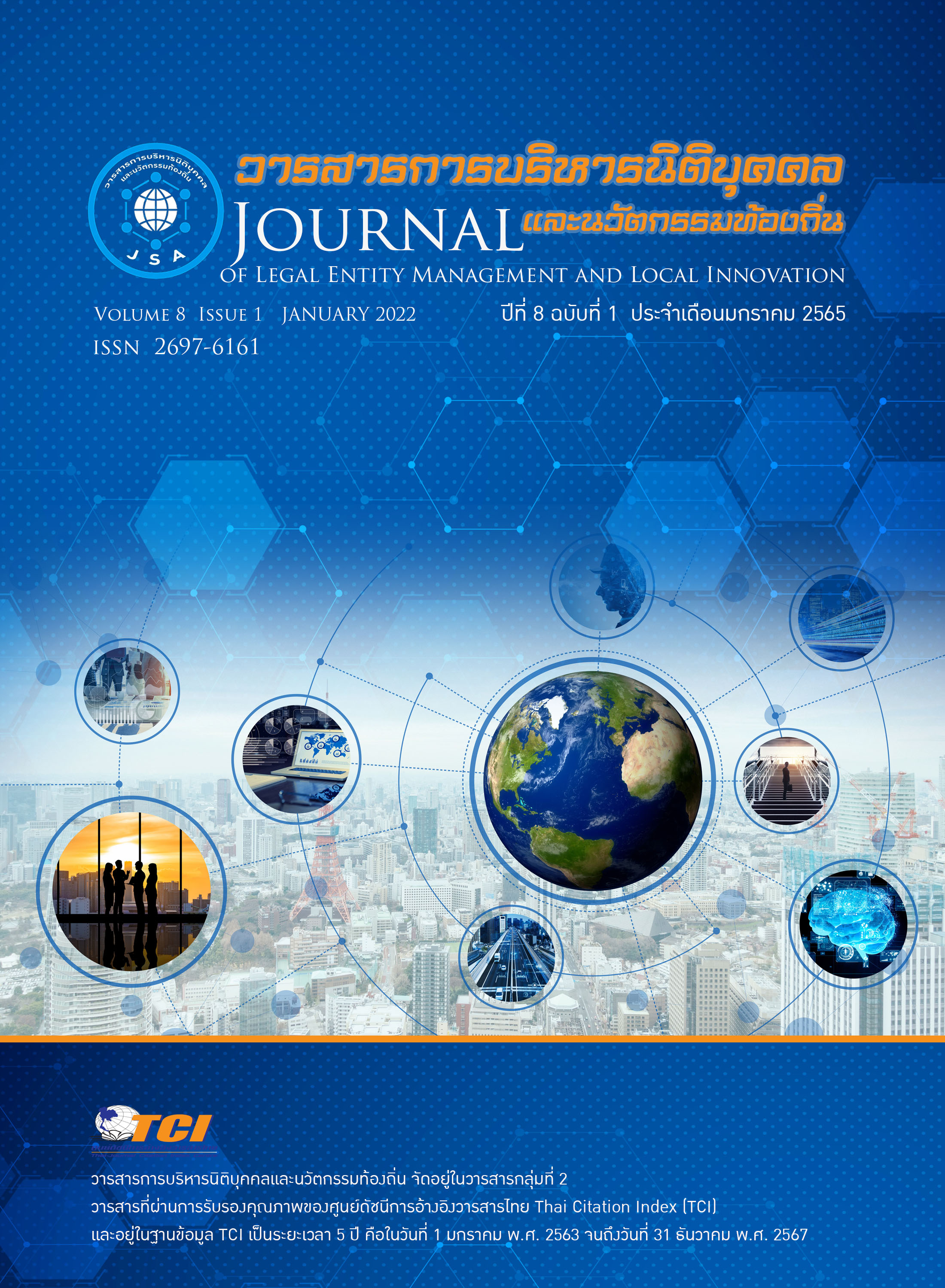Perception and Response Behavior of Pm2.5 : A Case Study of Motorcycle Taxi Workers in Din Daeng District, Bangkok
Keywords:
PM2.5, Air Pollution, Perception, Response BehaviorAbstract
The purpose of this research was to study the perception of small particulate matters 2.5 microns (PM2.5) of motorcycle taxi groups in Din Daeng, Bangkok by using a questionnaire. The results showed that most motorcyclists are sensitive to small particulate matters 2.5 microns (PM2.5) which exceeded the health standard and harmful to the body, 87.2%. Knowing that they were the receiver and emitter of small particulate matters 2.5 microns (PM2.5), 89.4%. While the motorcyclists had to observe the weather by themselves at a moderate level, Observations from roadside media signs, e.g., smart digital signage at a moderate level, 48.1%. By 2020, 27.1% of motorcyclists used medical face masks the most, followed by cloth masks alternating with medical face masks, 23.1%.Factors affecting the relations for perception of small dust particulate in the Din Daeng area consist of 4 aspects; 1) Education, the motorcyclists who perceived PM2.5 dust had higher education levels than the group of motorcyclists without the perception of PM2.5 dust. 2) Salary, the motorcyclists who perceived PM2.5 dust had higher salary levels than those in the group of motorcyclists who are not aware of PM2.5 dust. 3) N95 mask usage when the dust level is higher than the driving standard, the motorcyclists who perceived PM2.5 dust had higher levels of N95 mask usage than those who did not. 4) The presence of congenital diseases related to respiratory diseases, the motorcyclists with awareness against PM2.5 dust, know that they have congenital diseases related to respiratory diseases are higher than the group of motorcyclists who do not have the perception of PM2.5 dust; these factors were statistically significant at the levels .05.With factors affecting small particulate matters 2.5 microns (PM2.5) response behavior by Chi-square analysis; the researcher found that the educational level measurement results were related to the increase in the cost of purchasing masks. The salary level measurement results were related to the increase in the cost of examination for respiratory diseases were statistically significant at the levels .05.


